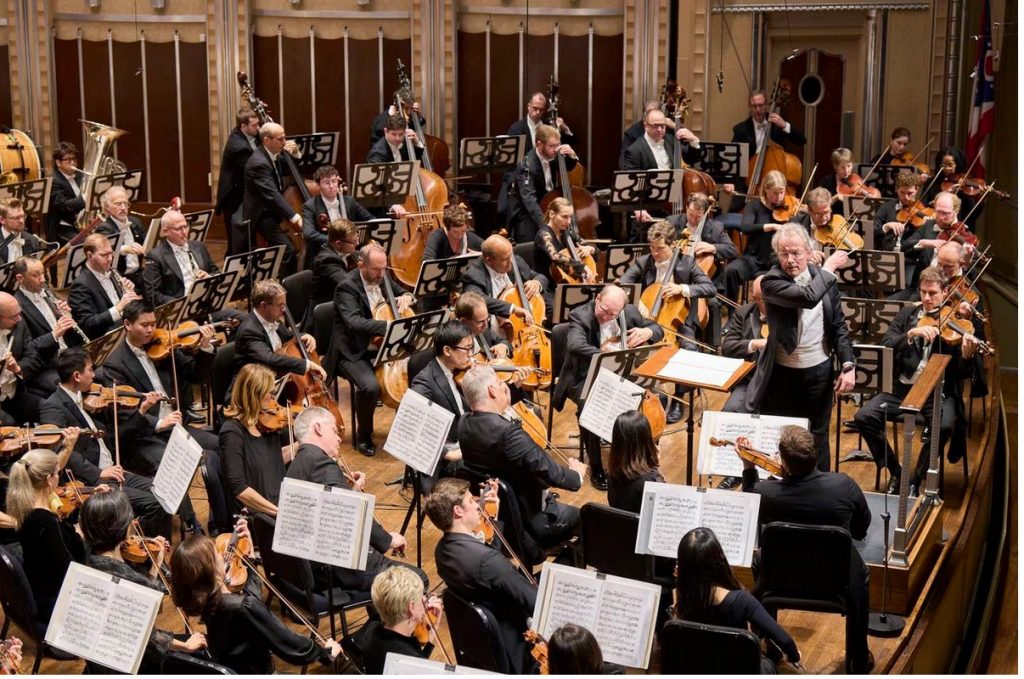Originally published on Cleveland.com
by Daniel Hathaway, Cleveland Classical
CLEVELAND, Ohio — In his Concert Overview for The Cleveland Orchestra performance at Severance Music Center on Wednesday evening, January 17, music director Franz Welser-Möst wrote:
“Tonight’s program was conceived as part of Carnegie Hall’s festival, Fall of the Weimar Republic: Dancing on the Precipice, which looks at the 15 years of the Weimar era (1918–33), some of the wildest and most innovative for the arts in history.”
The program, which will be repeated tonight (Thursday) before the Orchestra travels to New York for a two-day Carnegie residency, included brilliant performances of wildly contrasting, two-movement works by Sergei Prokofiev and Anton Webern that both bore the title of “Symphony,” though they couldn’t have been more divergent in intent and style.
Prokofiev’s Symphony No. 2, which dates from 1925, is an example of the “machine music” that was the latest, biggest thing with composers like George Antheil during the 1920s. Noisy and propelled by insistent rhythms, its aesthetic directly paralleled the rise of factories and mass production, and as a not-so-subtle hidden motive, set out to shock the bourgeois out of their artistic complacency.
Webern’s work, simply titled “Symphony” was crafted in 1927-1928 by a composer with an opposite idea in mind — the distilling of the musical content of a piece into its abstract essence, then allowing its DNA, if you will, to be manipulated in various ways — through inversion, retrograde motion, mirroring, and the use of canons.
Before hearing a note, you could also contrast these two works by the performing forces they require. Prokofiev No. 2 filled the stage with musicians, while the Webern stripped the orchestra down to one clarinet, one bass clarinet, two horns, harp, violins, violas, and cellos. The stage crew was busy moving chairs and stands on Wednesday evening.
If Prokofiev indeed intended to “Épater les bourgeoise” with his second symphony, he achieved a similar effect in Cleveland 99 years later. The opening is sonically shocking, then relieved by more gentle musical gestures before the next salvo is released.
The four variations that make up the second movement presented a kaleidoscope of orchestral colors both thorny and lush, with barking, foreboding bass lines punctuated by striking chords, and all delivered with panache. Similarly shocking was the unexpectedly quiet ending as though the composer, having achieved his agenda, says “there,” and simply walks out the door.
Single, spare notes in the Webern were passed between players and sections to suggest astonishingly intact melodic lines. Humorous touches abounded in the second movement, where antagonistic motives taunted each other, and the piece ended with two dismissive notes from the harp.
Prokofiev’s Second Symphony is new to Welser-Möst and the Orchestra, who recorded it in 2020 in Miami just before the COVID shutdown. Prokofiev 5, on the other hand, has been part of Cleveland’s repertory since George Szell first conducted it in January of 1947, and sent Wednesday’s audience away in quite a different frame of mind.
Dating from 1944, the Fifth Symphony is cast in the traditional four movements and overflows with musical ideas both dark and luminous that succeed one another in an abundance of invention. Welser-Möst and the Orchestra welcomed it like an old friend with an assured, settled performance, and clarinetist Afendi Yusuf, flutist Joshua Smith, oboist Frank Rosenwein, and bassoonist John Clouser won standups for their distinguished work.
Ignoring such details as rampant inflation, social disruptions, and the rise of Nazism, it could be exciting to imagine being alive during the artistic experiments of the Weimar Republic. Better, though, to experience those movements at a historical distance at Severance Music Center.
Daniel Hathaway is the founder and editor of the online journal ClevelandClassical.com. He teaches music journalism at Oberlin College and Conservatory of Music.
January 22, 2024.
Click here for a printable copy of this article



